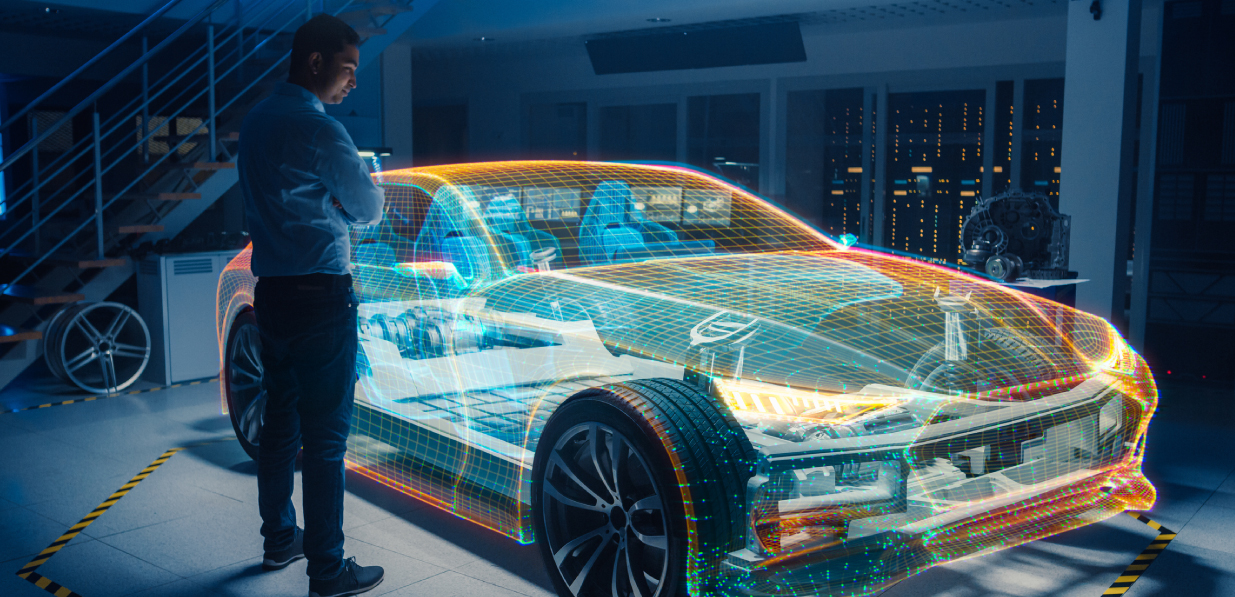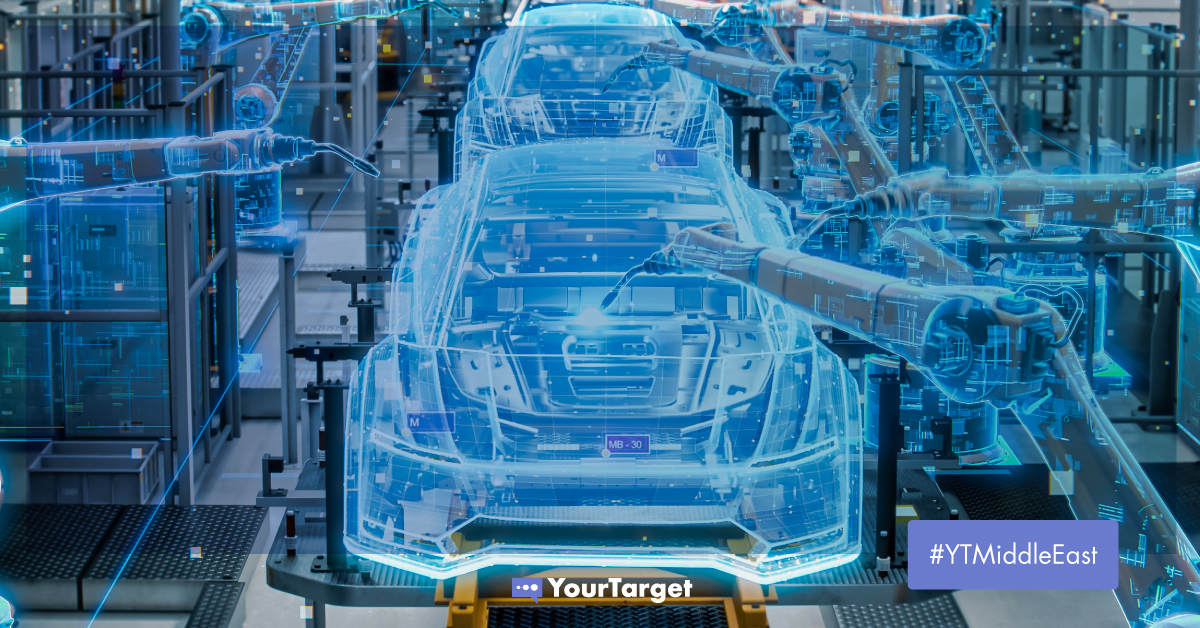In the beginning of 2021, Saudi Arabia’s automotive industry growth dropped significantly by 33% due to the ongoing effects of the pandemic. The imposed closures of industries across the board meant that the region’s economic growth slowed. Since then, it’s been growing, with sales increasing by a whopping 37.4%.
Saudi Arabia is home to the largest automotive market in the Middle East. The market share is led by Toyota, which accounts for 27.1% of local automotive sales. But with the country introducing digital transformation initiatives to bolster its economy and reinvent its reputation as a global commerce leader, it’s set to take center stage as a digital powerhouse.
Across industries, from travel and tourism to healthcare, Saudi Arabia is undergoing rapid digitalization and cementing itself as a forward-thinking, digitally-savvy nation.
Keep reading to find out about the role of digital marketing in transforming and catalyzing Saudi Arabia’s automotive industry performance.
Bouncing back from the pandemic
As the largest automotive market in the region, Saudi Arabia offers myriad opportunities for companies and investors interested in the industry. Motor insurance, vehicle leasing, and automotive model core sales are all experiencing a boost in interest from local and international investors and businesses.
In 2022, it’s expected that a locally-manufactured car will be launched as the Saudi government seeks to reinvent the industry to appeal to global automakers. The goal is to reach over $10 billion in direct investments by 2040, and to create 27,000 jobs within the sector. All of this is part of the nation’s Vision 2030 initiative, which aims for OEMs to manufacture more than 300,000 vehicles in the country between 2020 and 2030.
In the grand scheme of things, the goal of Vision 2030 is to reduce the country’s dependence on oil exports and emphasize the potential for growth within other industries in the future. As part of this, the Saudi government is making large investments in road infrastructure, with plans to develop a 680 km Saudi-Oman highway as well as the UAE Saudi Mafraq-Ghweifat International Highway to lead the growth of the logistics industry.
Additionally, the country is encouraging automotive startups to increase their operations. One example of this is Speero, a Riyadh-based automotive parts company, which has raised $1.8 million in investments for its platform that enables customers to order new and used automotive parts from the world’s top manufacturers. The company aims to use these investments to scale their digitization efforts towards future trends in the automotive industry.
But the lingering effects of the pandemic are still being felt. Lockdowns and business closures caused a major shift to online e-commerce and experiences. This was the same in the automotive industry, as the pandemic accelerated online sales of cars and other automotive products and services as customers sought to avoid showrooms and could no longer browse in person. In fact, before the pandemic only 32% of car buyers were open to buying online, but now 61% are.
Resultantly, the industry had to ensure that the digital experience they were providing was still attracting and converting customers in order to stay afloat.
Leveraging digital marketing trends in the automotive industry
Despite the drop in automotive sales due to the pandemic, demand is steadily increasing. In a 2020 survey conducted by CarGurus among a US audience, 92% of respondents looked forward to treating themselves once businesses reopened after the pandemic, with 42% considering a vehicle purchase as a way to treat themselves.

The pandemic increased our dependency on digital tools and internet-facilitated experiences. As we emerge from the depths of lockdowns and closures, the automotive industry must be prepared to reach a new audience of digitally-empowered consumers. So what are the factors shaping how automotive businesses are marketing their companies today in Saudi Arabia?
1. The shift to digital buying experiences
As car buyers weren’t able to visit physical showrooms when checking out the cars they were interested in, the traditional dealership model became futile.
People began shopping online for everything from groceries to clothing to automotive supplies, and automobile dealers and other businesses in the industry had to adapt to ensure their products and services could still be accessed and purchased online. But this isn’t an entirely new concept, as even before the pandemic 88% of consumers were researching their options online before visiting a dealership in person.
In this regard, the automotive industry as a whole was slow on the uptake of embracing digital marketing and sales techniques. One of the major modes of advertising for automotive companies is through TV commercials. However, this is no longer as effective as it used to be as the global population continues to favor digital streaming services to consume visual content.
To truly stay competitive in a digital-first automotive market, companies must leverage digital marketing techniques such as SEO, website services, and content marketing to continue reaching their target audiences.
2. The demand for a rich content experience
Beyond embracing the digital world, consumers are also more demanding and empowered than ever before – which has put increasing pressure on businesses to offer services that stand out.
Consumers expect a rich content experience from automotive businesses that have shifted online.
When shopping online, they expect to be able to access and explore all the available options rather than having to visit a dealership. To provide this type of experience, companies must ensure their inventory management systems are accurate and the customer experience is consistent across various touch points.
Rather than operating in silos – marketing, sales, customer service and logistics must be integrated. This ensures that customers have a cohesive experience when shopping online and connects their data to offer a streamlined service that’s more likely to lead to a sale.
Implementing a customer relationship management platform that tracks and updates customer data in real time will enable you to track marketing campaign performance, personalize communication, prioritize qualified leads, and ensure that sales and customer service teams have access to the data they need when handling customers.
3. Embracing the growing interest in emerging technologies
Buying a vehicle isn’t a decision people make lightly. Emerging technologies like VR and AR are becoming an increasingly popular option in the automotive industry as they allow prospective customers to experience the feel of the vehicle before buying.

The use of 3D models can greatly enhance the shopping experience and lead to more sales. Through this technology, they can visualize how any given car model will look on the road or give online buyers a virtual tour of vehicle interiors.
Combined with the shift towards online shopping, we’re likely to see this trend continue to grow and shape the industry in the future. Integrating these emerging technologies on websites and social media platforms can greatly improve the digital customer experience and help to expedite the purchase decision process.
Ready to take your automotive business to the next level?
If you’re an automotive business in Saudi Arabia, there’s no better time than the present to start reevaluating your marketing strategies to ensure they align with the needs of digitally-empowered customers.
Leveraging the right techniques, platforms, and data can help you to tap into a market of consumers who are making online experiences their first port of call when looking for new products and services.
Ensuring you’ve future-proofed your business with a great website and customer experience is just the first step. Be sure to keep your eyes peeled and your ears open for the latest industry trends and consumer sentiment shifts, to ensure you’re always ready to adapt and reposition your business in an ever-changing digital landscape.
Want to know more? Download the YourTarget eBook: Digital Marketing Trends and Forecast 2022 + Special Focus on the Middle East.

